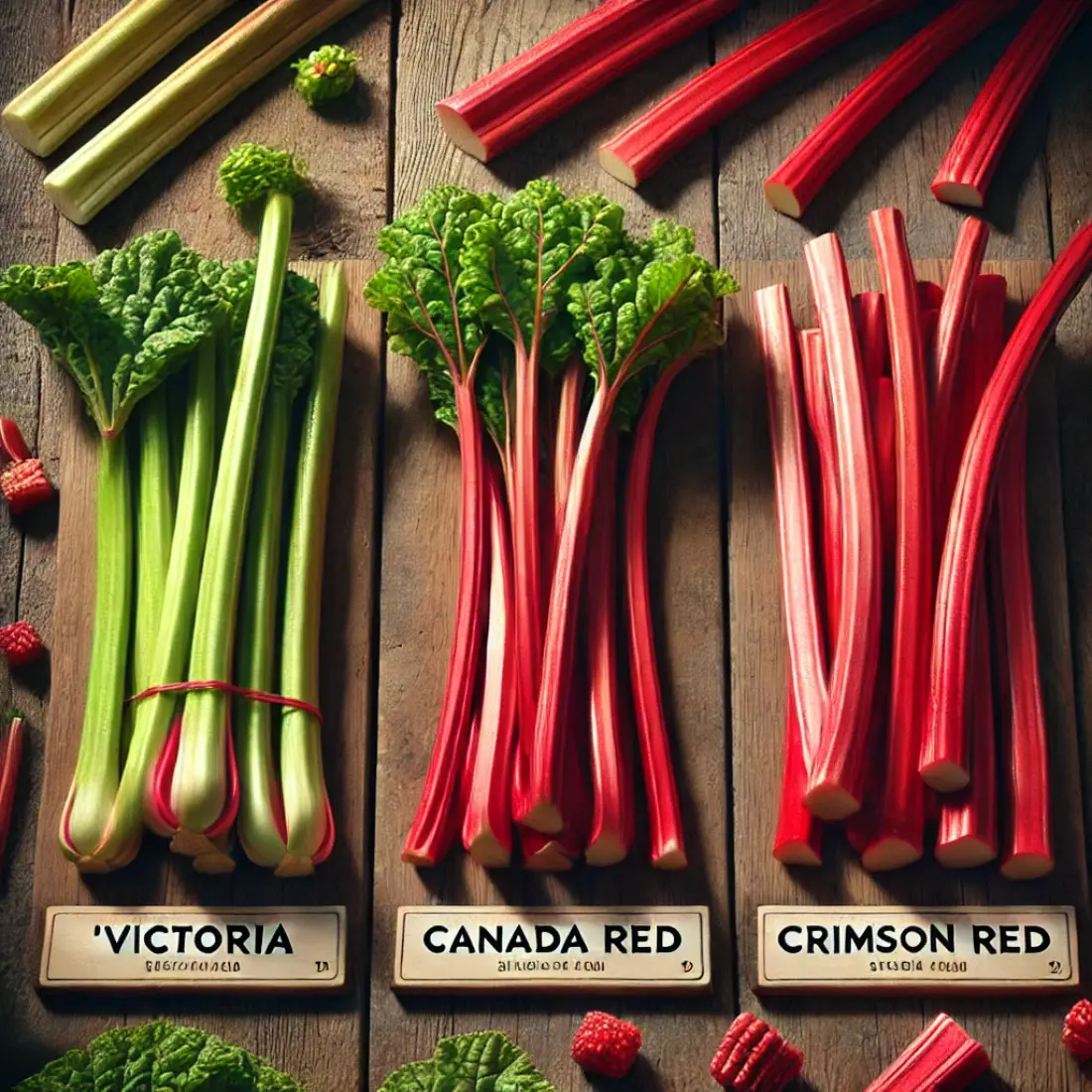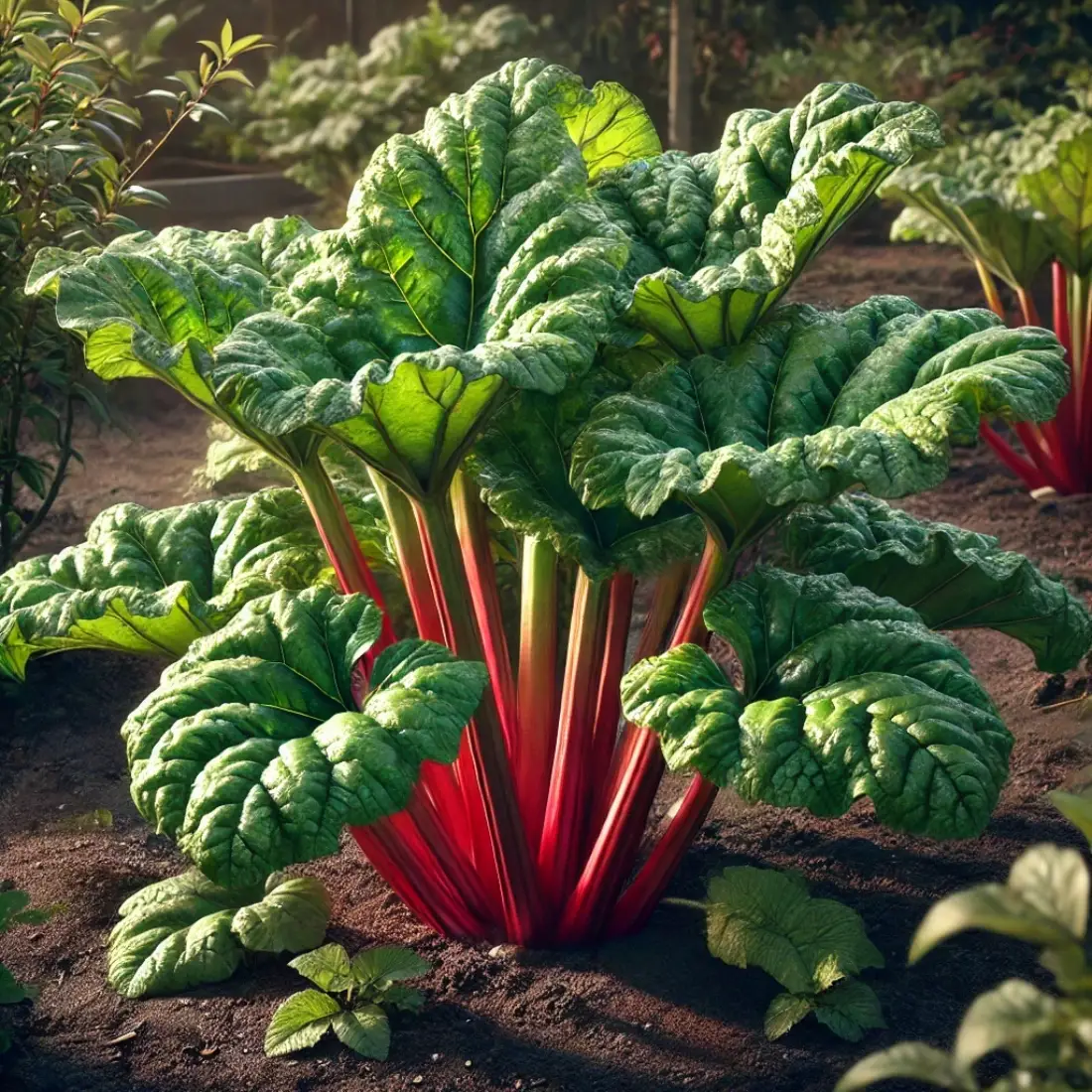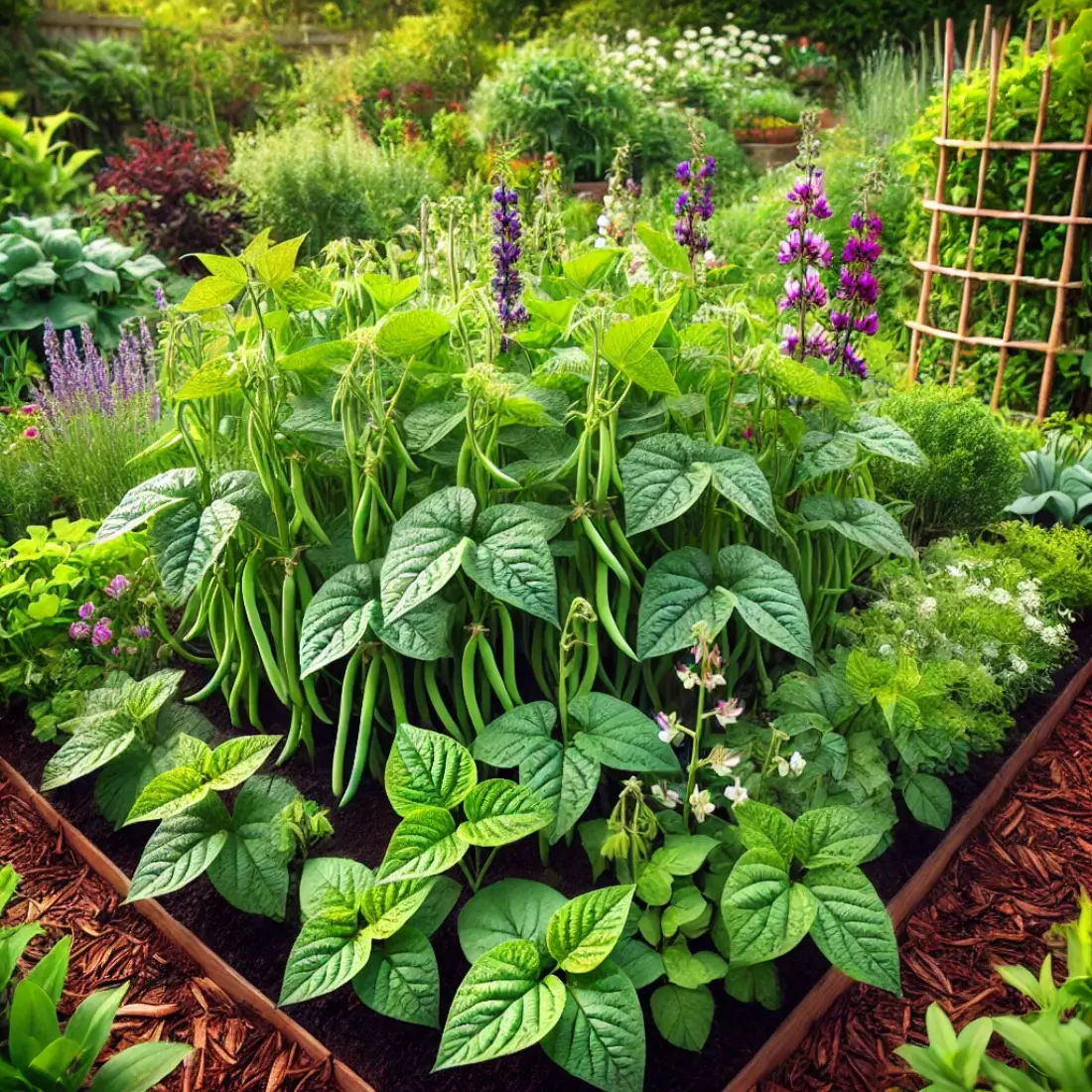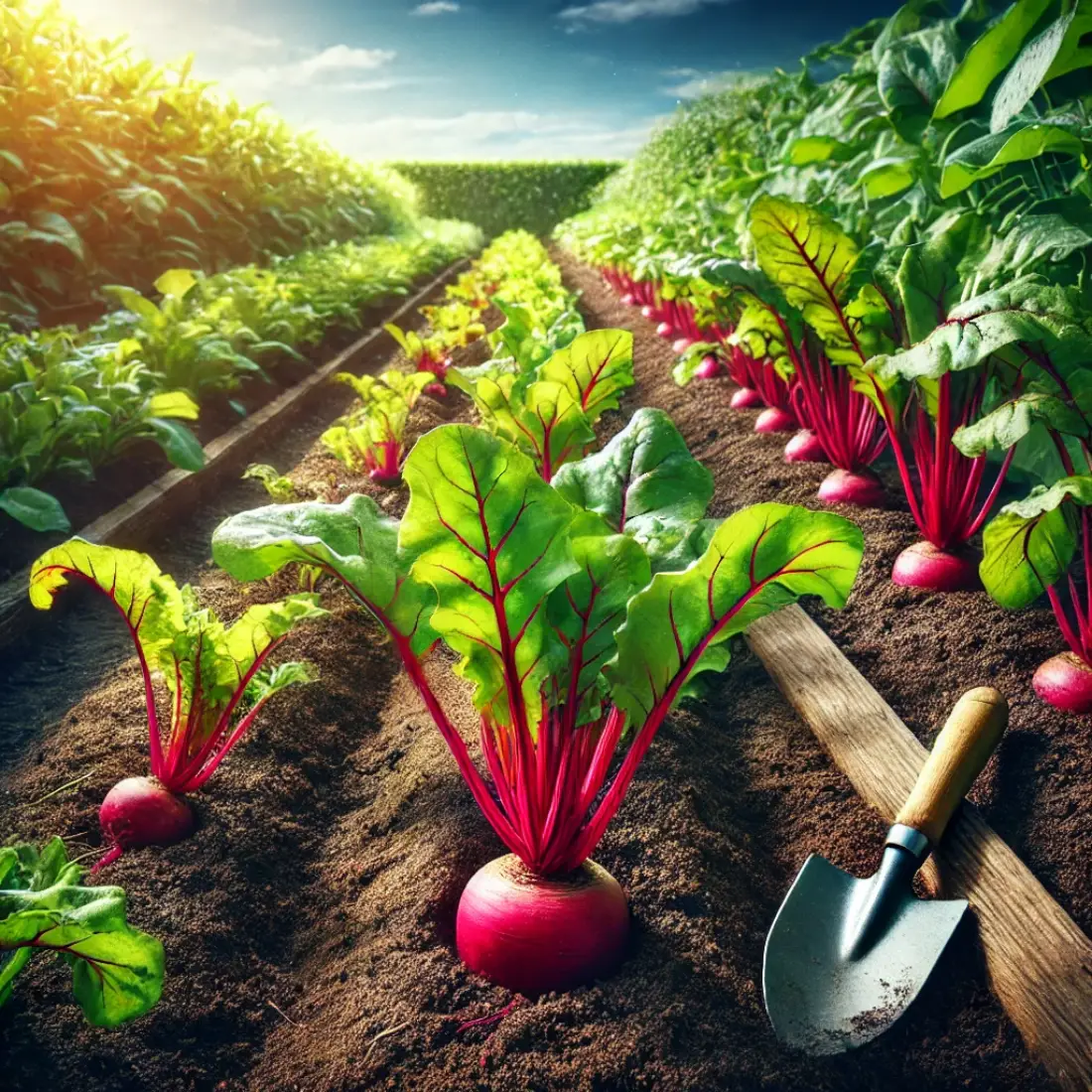Rhubarb (Rheum Rhabarbarum) is a perennial plant known for its tart, edible stalks. Native to Asia, it has been used for centuries in both culinary and medicinal applications. The plant features large, green leaves (which are toxic) and stalks that range from red to green. Rhubarb’s distinctively tangy flavor makes it a popular ingredient in pies, tarts, and sauces, often paired with sweeter fruits like strawberries.
Nutritionally, rhubarb is low in calories and high in dietary fiber, vitamin K, and calcium. Its stalks are the only part consumed, as the leaves contain oxalic acid, which is harmful if ingested. Beyond its culinary uses, rhubarb has been traditionally used in Chinese medicine for its digestive benefits.
- Rhubarb thrives in well-drained, fertile soil with a pH between 6.0 and 6.8.
- Choose a sunny location for planting, as rhubarb needs ample sunlight to grow.
- Plant in early spring, spacing the crowns 3 feet apart to allow room for growth.
- Water consistently, but avoid waterlogging, and mulch to retain moisture.
- Use organic fertilizers and compost to enrich the soil.
- Control pests and diseases with natural methods, such as neem oil and companion planting.
- Harvest by pulling stalks gently, avoiding the leaves due to their toxicity.
Choosing the Right Variety

Selecting the right rhubarb variety is crucial for a successful organic garden. Here are some popular varieties to consider:
‘Victoria’
- Description: ‘Victoria’ is known for its long, thick stalks and mild flavor. It produces large yields and is a reliable choice for beginners.
- Best Use: Versatile, suitable for both cooking and baking.
‘Canada Red’
- Description: This variety offers sweeter, tender stalks that are perfect for desserts. The stalks are bright red and maintain their color when cooked.
- Best Use: Ideal for pies, jams, and other sweet recipes.
‘Crimson Red’
- Description: ‘Crimson Red’ is prized for its vibrant red color and robust, tangy taste. The stalks are slender and tender.
- Best Use: Excellent for making visually appealing dishes and preserves.
Optimal Growing Conditions for Rhubarb
Rhubarb thrives best in specific growing conditions that ensure robust and healthy plants:
Sunlight
- Requirement: Full sun is ideal, but rhubarb can tolerate partial shade.
- Impact: Adequate sunlight promotes vigorous growth and larger stalks.
Soil
- Type: Well-drained, fertile soil.
- pH Level: Between 6.0 and 6.8 for optimal nutrient absorption.
- Preparation: Enrich the soil with organic compost or well-rotted manure before planting to enhance fertility.
Watering
- Frequency: Consistent, even moisture is key.
- Method: Water deeply to encourage strong root development but avoid waterlogging, which can lead to root rot.
- Mulching: Use straw or grass clippings to retain soil moisture and control weeds.
Temperature
- Ideal Range: Rhubarb grows best in cooler climates with temperatures ranging from 40°F to 75°F (4°C to 24°C).
- Winter Dormancy: Rhubarb needs a period of winter chill (below 40°F/4°C) to break dormancy and stimulate growth in the spring.
Nutrients
- Feeding: Use organic fertilizers such as compost tea or well-rotted manure to provide essential nutrients.
- Annual Care: Apply a thick layer of compost around the plants each spring to replenish nutrients and support growth.
Maintaining Healthy Rhubarb Plants
Maintaining healthy rhubarb plants requires consistent care and attention to ensure vigorous growth and abundant harvests. Here are key practices for keeping your rhubarb thriving organically:
Pruning and Thinning
- Regular Maintenance: Remove any dead or yellowing leaves to prevent disease.
- Thinning: In the first year, refrain from harvesting to allow the plant to establish. In subsequent years, thin crowded plants to ensure adequate airflow and sunlight penetration.
Weed Control
- Mulching: Apply organic mulch such as straw or grass clippings around the plants to suppress weeds and retain soil moisture.
- Hand Weeding: Regularly remove weeds by hand to prevent competition for nutrients and water.
Seasonal Care
- Winter Protection: In colder climates, mulch rhubarb crowns heavily in late fall to protect against frost damage.
Harvesting Rhubarb
Harvesting rhubarb correctly ensures you get the best quality stalks while keeping the plant healthy for future growth. Here’s how to do it:
When to Harvest
- Timing: Rhubarb is typically ready to harvest in its second year, allowing the plant to establish strong roots.
- Season: Harvest season runs from spring to early summer, usually from April to June. Stalks should be 12-18 inches long and firm.
How to Harvest
- Method: Grasp the stalk near the base and pull it gently with a slight twisting motion. Avoid cutting the stalks, as pulling encourages new growth.
- Quantity: Harvest only a third of the plant’s stalks at a time to ensure continued growth and health. Leave at least two-thirds of the stalks on the plant.
Post-Harvest Care
- Remove Leaves: Immediately cut off the toxic leaves and discard them safely, as they contain oxalic acid.
- Handling: Wash the stalks thoroughly to remove any dirt and debris.
Tips for Prolonging Harvest
- Regular Harvesting: Consistent harvesting during the growing season encourages new stalk production.
- Season Extension: In cooler climates, use row covers to extend the harvest period by protecting the plants from frost.
Storage
- Short-Term: Fresh rhubarb stalks can be stored in the refrigerator for up to two weeks.
- Long-Term: For longer storage, rhubarb can be chopped and frozen or preserved in jams and sauces.
Common Troubleshooting for Growing Rhubarb
Growing rhubarb organically can present challenges. Here are some common issues and solutions:
Yellowing Leaves
- Cause: Overwatering, poor drainage, or nutrient deficiency.
- Solution: Ensure soil is well-drained and avoid waterlogging. Improve soil fertility with compost and organic fertilizers.
Wilting Stalks
- Cause: Underwatering, high temperatures, or root rot.
- Solution: Water regularly, especially during dry spells. Mulch to retain soil moisture. Check for signs of root rot and improve drainage if needed.
Poor Growth
- Cause: Insufficient sunlight, poor soil quality, or overcrowding.
- Solution: Ensure rhubarb is planted in full sun. Enrich soil with organic matter. Thin plants to provide adequate space and airflow.
Pest Infestations
- Common Pests: Aphids, slugs, and snails.
- Solution: Use neem oil or insecticidal soap for aphid control. Set up barriers or traps for slugs and snails. Introduce beneficial insects like ladybugs.
Leaf Spots and Fungal Diseases
- Cause: Wet foliage, poor air circulation.
- Solution: Water at the base of the plant to keep leaves dry. Thin plants to improve airflow. Remove and destroy affected leaves.
Stunted Growth
- Cause: Nutrient deficiency or heavy soil.
- Solution: Test soil pH and amend with compost or organic fertilizers. Avoid compacted soil by adding organic matter and ensuring proper drainage.
Flowering (Bolting)
- Cause: Stress from high temperatures or plant maturity.
- Solution: Remove flower stalks as soon as they appear to redirect energy to vegetative growth. Ensure consistent watering and mulching to reduce stress.
FAQs about Growing Rhubarb Organically
How long does it take for rhubarb to grow?
Rhubarb typically takes one to two years to establish fully before you can start harvesting. It’s best to wait until the second growing season to begin harvesting stalks.
Can I grow rhubarb in containers?
Yes, rhubarb can be grown in large containers with good drainage. Ensure the container is at least 20 inches deep to accommodate the root system.
How do I protect rhubarb from pests?
Use organic pest control methods like neem oil for aphids, and set up barriers or traps for slugs and snails. Companion planting with marigolds or garlic can also deter pests.
What are the signs of overwatering rhubarb?
Overwatering can cause yellowing leaves, wilting stalks, and root rot. Ensure soil is well-drained and water consistently but avoid waterlogging.
Is rhubarb safe to eat raw?
Rhubarb stalks can be eaten raw but are very tart. Most people prefer to cook them with sugar to reduce the acidity. The leaves should never be eaten as they are toxic.
How often should I fertilize rhubarb?
Fertilize rhubarb in early spring and midsummer with organic compost or well-rotted manure. Applying a thick layer of compost annually helps maintain soil fertility.
Why is my rhubarb bolting?
Bolting, or flowering, can occur due to stress from high temperatures or plant maturity. Remove flower stalks promptly to encourage vegetative growth and reduce stress by mulching and consistent watering.
Can rhubarb grow in partial shade?
Rhubarb prefers full sun but can tolerate partial shade. However, it will grow more vigorously and produce larger stalks with at least six hours of sunlight daily.
How do I divide and transplant rhubarb?
Divide rhubarb crowns in early spring or fall when the plant is dormant. Dig up the crown, cut it into sections with at least one bud each, and replant immediately.
What should I do if my rhubarb leaves develop spots?
Leaf spots are often caused by fungal infections. Remove affected leaves, ensure good air circulation, and avoid watering the foliage. Applying neem oil can help control the spread.










